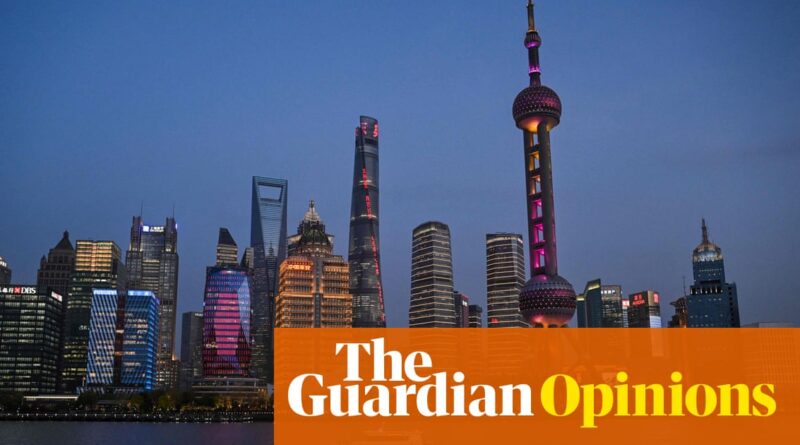The threat to retail markets comes from China and the Middle East, not the US | Larry Elliott
BIn the 1930s, the French government built what it thought was an impregnable defense against a German attack at the start of the first world war. The Maginot Line may have looked impressive but it proved to be a white elephant because when the invasion came in 1940 it was in a completely different place.
Last week the financial markets showed something that had the feel of the Maginot Line. They are right in thinking that there is a threat lurking outside but they are wrong in thinking that the biggest danger is a recession in the US. The real threat comes from elsewhere.
To be honest, the US economy is slowing down, but it is not close to collapse. Unemployment is rising but from historically low levels. The central bank of the United States, the Federal Reserve, left it too late to cut interest rates but may make up for lost time in the coming months. America’s economy has staying power and – as in the past – it may confound pessimists. After the jitters, last weekend Wall Street seemed to have come around to the idea that the US is about to settle down. That seems to be the most logical conclusion.
There are two other sources of potential trouble: the Middle East and China. Too little attention is paid to the dangers of the conflict in Gaza escalating into a full-scale conflict between Israel and Iran. In the past, this type of tension would have led to a sharp increase in the cost of raw materials, but it has not happened yet. The oil crisis in the Middle East has been a dog that does not bark. For now.
Another reason why rising tensions in the Middle East are not reflected in commodity markets is that China’s growth outlook has worsened. The belief in financial markets is that policymakers in Beijing will act to boost the economy and that the slowdown will be temporary. Again, this is a questionable assumption.
China’s problems are structural and have far-reaching implications for the rest of the world. For decades it has relied on a growth model based on building industrial capacity with large national investments and low credit. The focus on production has led to low levels of consumer spending as well as rapid deterioration of goods.
A realignment of this trend – shifting the balance from investment and exports to consumption – is long overdue. Social safety nets provide far less protection than western ones, and it has proven impossible for the local economy to absorb all the goods produced by Chinese factories. The surplus goods were sold as exports, leading to huge trade profits.
From time to time, China’s leaders are confused by the idea of changing the ways but wedded to the policy that made the country the second largest economy in the world. In the 1990s, it was this model of export-led growth that helped bring down inflation in the west – and it is doing so again. Property prices in the UK in June were 1.4% lower than a year earlier – partly as a result of China flooding the market with discounted goods.
Writing in Foreign Affairs magazine, Zongyuan Zoe Liu, a member of the Council on Foreign Relations, notes that China produces twice as much solar panels as the rest of the world can use. while almost a third of car manufacturers are unprofitable. .
“China is producing more products than it can, or the foreign market, can sustainably absorb. As a result, the Chinese economy is vulnerable to falling prices, to debt, factory closures, and ultimately, job losses,” he said.
The gap between supply and demand has meant that Chinese companies have had to cut their prices, resulting in lower profits, and deeper discounts as they struggle to service their debts and they are always there.
after the news release
There are already signs of stress. The increase looks set to fall short of this year’s 5% target set by Beijing officials. Export figures released last week failed to meet market expectations. The money supply, with recent reporting as a key indicator of future growth, glows red.
There are two things that distinguish China now from the China of the 1990s. First, problems of overwork and overproduction have increased. Second, western governments are no longer prepared to sit back and allow their industries to be destroyed. They have imposed tariffs on Chinese goods and – to the benefit of the US – have provided substantial subsidies to domestic producers.
There are many ways this can play out. China may succumb to western pressure, voluntarily reduce its exports, and change its economic model. This seems very unlikely.
There is a high probability that the conflict between the west and China will worsen rather than ease. Beijing insists it is not guilty of dumping its excess output on world markets, while Washington and Brussels insist it is. China is already trying to divert imports through third countries to avoid western tariffs but has so far resisted the temptation to introduce its own tit-for-tat measures.
The short-term risk is that western protectionist actions lead to higher prices, higher inflation and higher interest rates. The long-term danger is for the west to increase world wealth by increasing its production. In that event, the rate of interest would fall and global capitalism would face a self-inflicted disaster – as Karl Marx predicted.
#threat #retail #markets #China #Middle #East #Larry #Elliott

